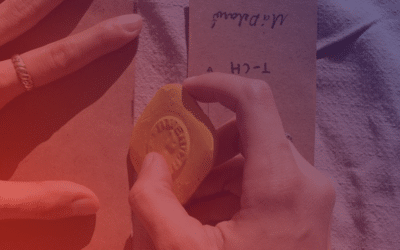In August and September 1859, there was a major geomagnetic storm—aka, the Carrington Event, the largest ever recorded—that produced dazzling auroras visible throughout the US, Europe, Japan, and Australia. Scientists have long been fascinated by the underlying physical processes giving rise to such displays, but while the basic mechanism is understood, our understanding is still incomplete. According to a new paper published in the journal Nature Communications, electrons in the Earth’s ionosphere catch a plasma wave in order to accelerate toward Earth with sufficient energy to produce the brightest types of auroras.
The spectacular kaleidoscopic effects of the so-called northern lights (or southern lights if they are in the Southern Hemisphere) are the result of charged particles from the Sun being dumped into the Earth’s magnetosphere, where they collide with oxygen and nitrogen molecules—an interaction that excites those molecules and makes them glow. Auroras typically present as shimmering ribbons in the sky, with green, purple, blue, and yellow hues. The lights tend to only be visible in polar regions because the particles follow the Earth’s magnetic field lines, which fan out from the vicinity of the poles.
There are different kinds of auroral displays, such as «diffuse» auroras (a faint glow near the horizon), rarer «picket fence» and «dune» displays, and «discrete aurora arcs»—the most intense variety, which appear in the sky as shimmering, undulating curtains of light. Discrete aurora arcs can be so bright, it’s possible to read a newspaper by their light. (Astronomers have concluded that the phenomenon that earned the moniker STEVE (Strong Thermal Emission Velocity Enhancement) several years ago is not a true aurora after all, since it is caused by charged particles heating up high in the ionosphere.) Scientists believe there are different mechanisms by which precipitating particles are accelerated to produce each type.
One of the unanswered questions is precisely how electrons become accelerated before colliding with the ionosphere. Physicists from the University of Iowa, Wheaton College, University of California, Los Angeles (UCLA), and the Space Science Institute in Los Angeles were keen to explore the mechanism behind discrete auroral arcs in particular. Among the proposed theories is that the electrons become accelerated because of so-called Alfvén waves traveling Earthward.
Alfvén waves arise in plasma, a fourth state of matter that has similar properties to fluids and gases, but also contains magnetic (and sometimes electric) fields. They were first hypothesized in 1942 by the Swedish plasma physicist Hannes Alfvén and have since been observed in both space-based and terrestrial plasmas. Under certain conditions, Alfvén waves can exchange energy with particles in the plasma, sometimes trapping them in the troughs of the waves. It has been suggested that Alfvén waves are responsible for the acceleration of precipitating particles that ultimately give rise to discrete aurora arcs.
According to the authors, the theory goes something like this. Solar flares and coronal mass ejections can trigger strong geomagnetic storms. Those storms in turn can cause the magnetic field lines from the Southern and Northern Hemispheres to break and reform (magnetic reconnection), before snapping back toward Earth like a stretched rubber band. That rebounding launches Alfvén waves, which travel toward Earth along the magnetic field lines, accelerating along the way to as much as 35,000 km/s (almost 80 million mph), thanks to the increasing strength of Earth’s magnetic field.
Meanwhile, the electrons trapped in Earth’s magnetosphere are decreasing in thermal speed. At an altitude below 20,000 km (or 12,000 miles), the Alfvén waves will be moving just a bit faster than the electrons’ thermal speed. This enables electrons traveling in the same direction to «surf» the Alfvén waves. Any surfer can tell you that the trick to catching a wave is to paddle until your board’s speed matches that of an incoming wave; otherwise the wave will just shoot right past, leaving you bobbing forlornly behind on your surfboard, watching everyone else have all the fun. The electrons do essentially the same thing.
As energy is transferred from waves to electrons, those electrons accelerate up to 20,000 km/s (or 45 million mph) before colliding with atoms in the thin air of the upper atmosphere, producing a discrete aurora arc. It’s a phenomenon known as Landau damping, after the Soviet physicist Lev Landau who first described it theoretically in 1946. The effect is also essential for stability in particle accelerators, since it suppresses any unwanted motions from particle beams interacting with their surroundings via electromagnetic wakefields.
There is already some evidence in support of this theory from observations of Alfvén waves moving Earthward above auroras made during the flight of sounding rockets and certain spacecraft missions. But a definitive measurement for both Alfvén waves and the accelerated electrons was still lacking. So the team decided to conduct a series of experiments at the Large Plasma Device (LPD) at UCLA’s Basic Plasma Science Facility, which creates plasmas capable of supporting Alfvén waves—similar to plasmas in space, albeit on a smaller, terrestrial scale.
It was a daunting challenge, since they needed to measure a very small population of electrons as they sped down the LPD chamber, at close to the same speed as the Alfvén waves. So the physicists had to develop a number of new instruments and techniques—not just a device sensitive enough to measure a few electrons, but also a high-powered antenna to launch Alfvén waves with the right characteristics to be able to accelerate those electrons. They also had to figure out how to combine measurements of the electrons and electric fields to get a unique signature for that acceleration.
All the electrons in the plasma created within the experimental chamber moved at a range of speeds, but less than one in a thousand were moving down the chamber at nearly the same speed as the Alfvén waves. And as predicted, «Measurements revealed this small population of electrons undergoes ‘resonant acceleration’ by the Alfvén wave’s electric field, similar to a surfer catching a wave and being continually accelerated as the surfer moves along with the wave,» said co-author Greg Howes, a physicist at the University of Iowa. The experimental results matched their predicted signature for the damping effect.
«The idea that these waves can energize the electrons that create the aurora goes back more than four decades, but this is the first time we’ve been able to confirm definitively that it works,» said co-author Craig Kletzing, also a physicist at the University of Iowa. «These experiments let us make the key measurements that show that the space measurements and theory do, indeed, explain a major way in which the aurora are created.»
Fuente: https://arstechnica.com/science/2021/06/electrons-in-ionosphere-catch-a-plasma-wave-to-produce-brightest-auroras/



